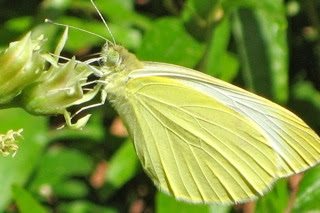Kumeyaay native Americans observed winter solstice on the Viejas summit and at one time there was still a T shaped rock formation pointing toward Buckman Mountain in the distant southeast. On solstice the sun rises directly behind the mountain.
After ditzing around trying to locate the trail head in the dark we were on our way up the steep, almost 2 miles straight uphill, rocky, bouldery trail through chapparrel, two puddles of light under the huge Milky Way.

Without any moon, we were grateful for our police grade flashlights, and at one point I heard Kathleen say only the foolhardy would be doing this. Indeed, we were the only ones out of 3 million San Diegans. Even in the dark Kathleen was going on about the biodiversity of Viejas. I was just focused on one foot in front of the other and periodically checking behind for the glowing eyes of a stalking mountain lion. We went through a verbal rehearsal of how we would handle a mountain lion attack, and I reminded Kathleen about the lady who saved her friend in Orange County a few years ago.
It was 39 degrees at mountain base, and about three quarters of the way up the wind started. The sliver moon became visible from behind the mountain, and the pale light of dawn began. We reached a collection of stones at the top, but the true summit was another quarter mile across a wind swept ridge.
We reached the stone circle of the summit just before sunrise and a few minutes later the only other solstice hiker arrived, a Menzies clan Scot by the name of Pat. Together the three of us watched the glow on the horizon,

and toasted the coming New Year with hot chocolate,

until the sun came peeking,

then bursting out behind the saddle of Buckman.

The Alpine Historical Society has documented an account of the winter solstice celebration on Viejas Mountain by a Kumeyaay elder, Maria Alto, in 1914, and I repeat it in entirety here as an abbreviated account would lose the significance of what used to happen here.
Long before Kwut’ah Lu’ e-ah (Song-Dance, or Viejas, east of El Cajon) mountain fell into the hands of See-i (Evil One), the Indians made a pilgrimage once a year to its very top to watch In’ya (Sun) come out of En-yak’ (East), and praise and honor him with song and dance. For In’ya (Sun) was the great Ruler of All Things. He governed the universe; he commanded the earth, nothing grew unless he caused it; he even dominated the bodies of men, some of whom he made energetic and strong, others weak and lazy. When he disappeared at night he cast a drowsiness o’er the world, so that everything slept until it was time for him to come again in the morning. Such a great ruler as he, received due reverence and worship.
For many preceding moons the young Braves prepared themselves for the race which began the celebration of Kwut’-ah Lu’ e-ah (Song-Dance). They ate no meat while in training for this event, and daily they bathed and rubbed their bodies with Cha-hoor’ (Clear Rock). This crystal made them light on their feet like animals, so they could jump over high boulders and run with the swiftness of deer.
When the time came, everything was in readiness. The big circle on top of the mountain had been freshly prepared and cleared for the dancers and singers. The aged and feeble, with the small children of the village, had been carefully carried up there the previous afternoon, that they might be on hand to take part in the ceremonies.
Then, in that mystic hour which is neither night nor day, the able-bodied ones made the ascent. Last of all, after the others had reached the top, the runners came; swiftly they vied with each other over the steep trails - some so fleet they seemed to fly like birds over the course.
When all had reached the summit, the ritualistic ceremonies began. With song and dance in the blushing dawn, they watched for In’ya (Sun), Ruler of All. Opalescent streamers of golden radiance and flaming banners of crimson flaunting across the pearly tints of the receding night, heralded his arrival; while the people chanted songs of praise in honor of his wonderful light, and made obeisance in the dance in homage of his great power over all things.
Year after year this celebration took place till See’i (Evil One) grew envious, and cast a spell over the mountain; then the Indians feared to make the ascent any more.
One or two foolhardy ones made the attempt, but they found the trails tedious and wearisome. The springs of water by the pathway were poisonous, and frightful noises like the hissing and rattle of snakes pursued their footsteps, and they gave up in despair.
So, though the old trails are faintly discernible and traces of the ring where they danced and sang still remain, no more does the red man swiftly ascend Kwut’ah Lu’e-ah (Song-Dance) mountain to watch In’-ya (Sun) come out of En-yak’ (East) in all his glory.
I am grateful this year not to be so "aged and feeble" that I can still take myself up a mountain. What an amazing experience this was!

















































